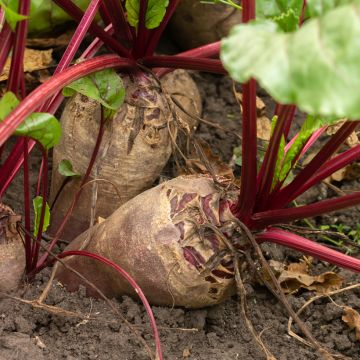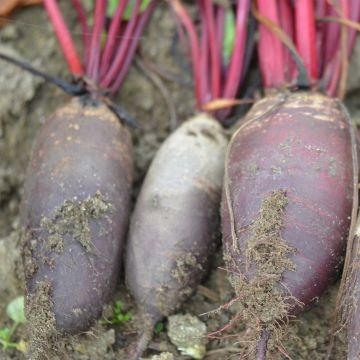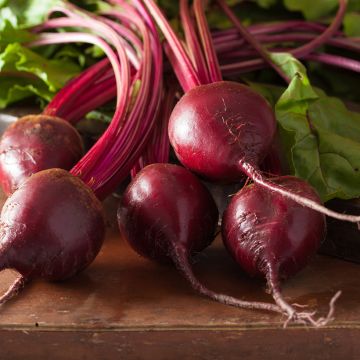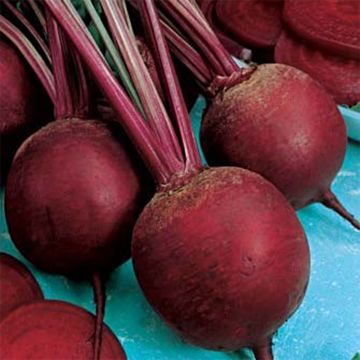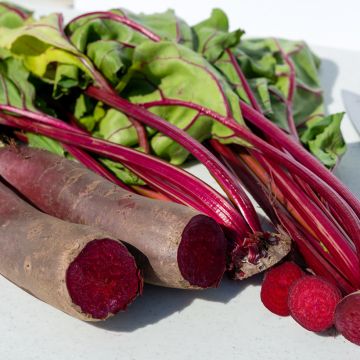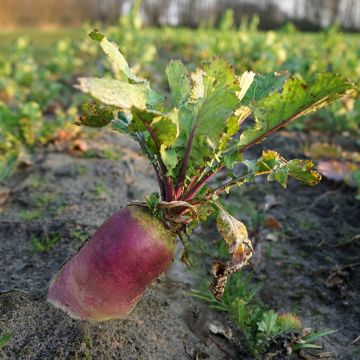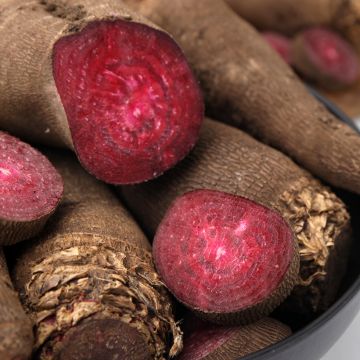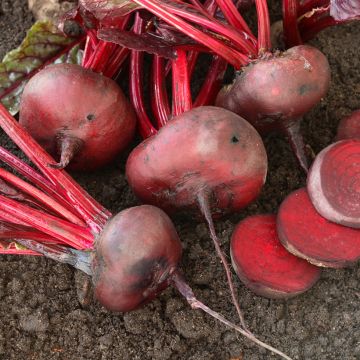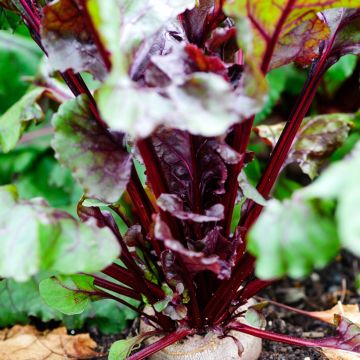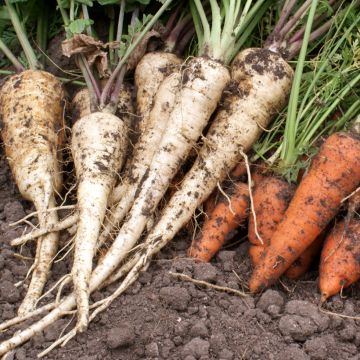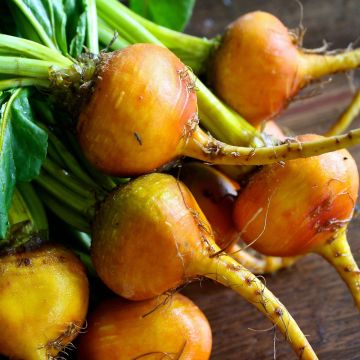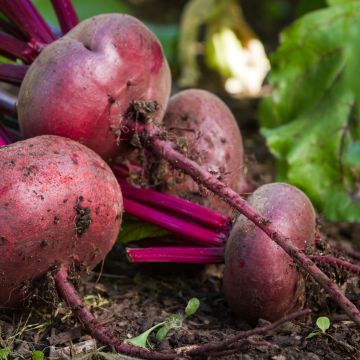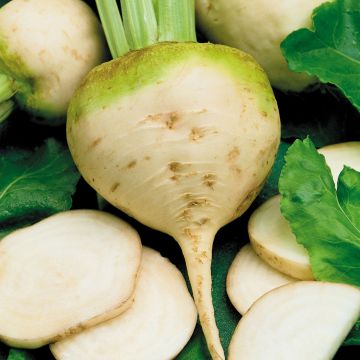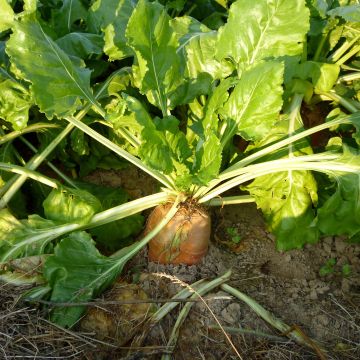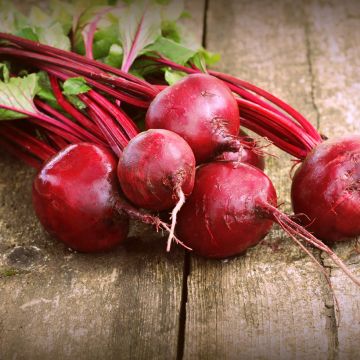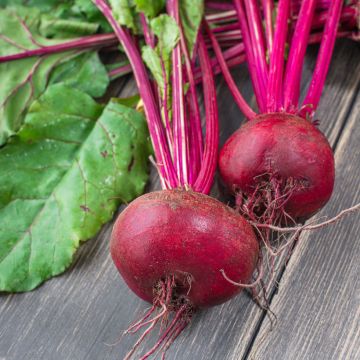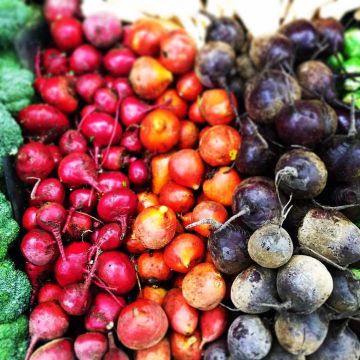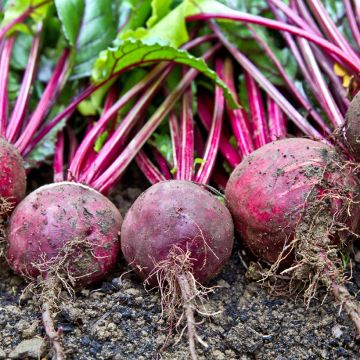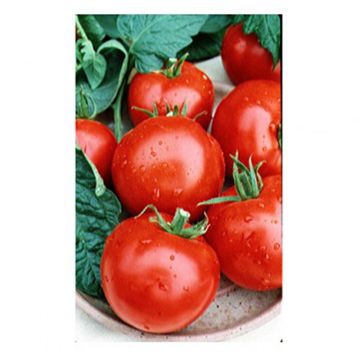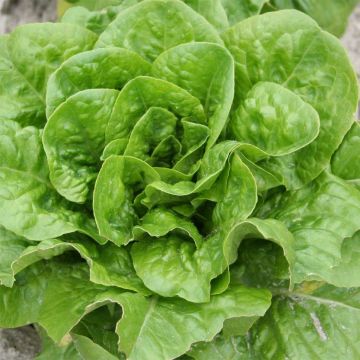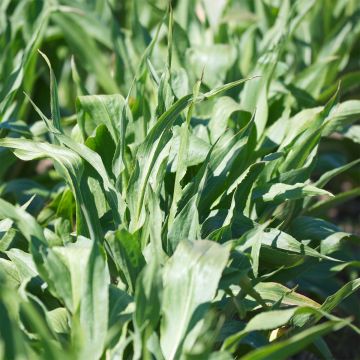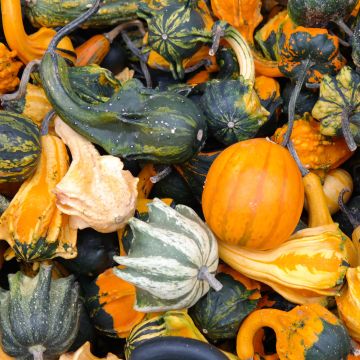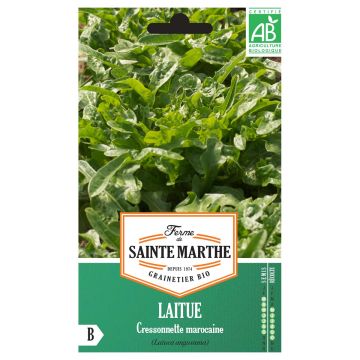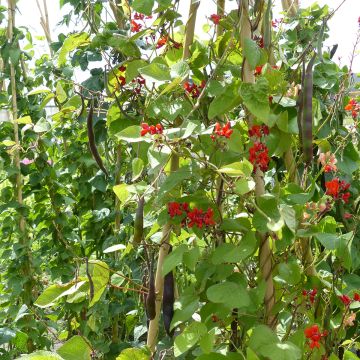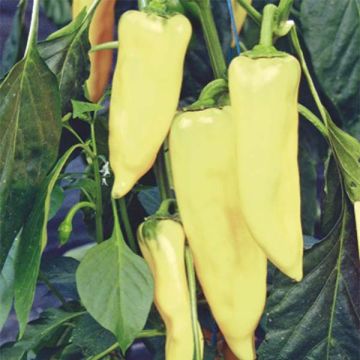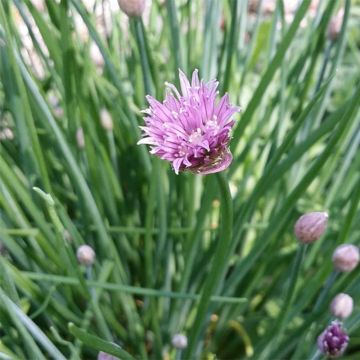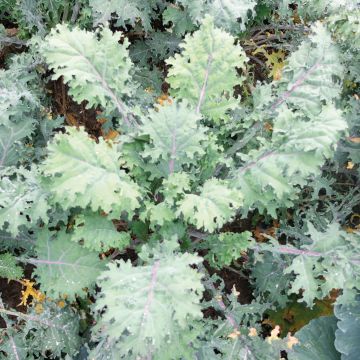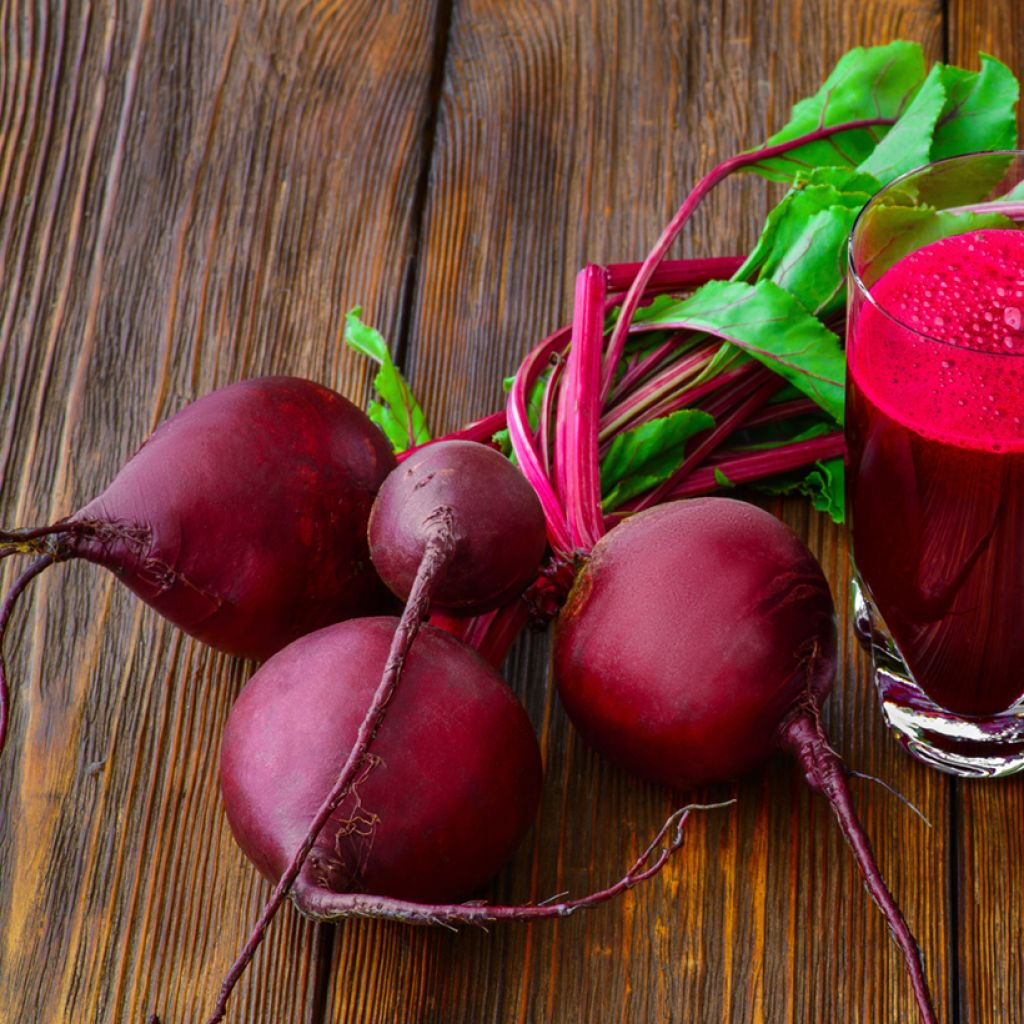

Detroit 2 Crimson Globe Red Beetroot - Beta vulgaris
Detroit 2 Crimson Globe Red Beetroot - Beta vulgaris
Beta vulgaris Detroit 2 Crimson Globe
Beet, Beetroot
Dear Sir or Madam, Seeds have arrived, and I will provide my feedback after observing their successful germination. Yours sincerely, JC R
Jean Claude R., 15/01/2019
Why not try an alternative variety in stock?
View all →This plant carries a 6 months recovery warranty
More information
We guarantee the quality of our plants for a full growing cycle, and will replace at our expense any plant that fails to recover under normal climatic and planting conditions.
Seed-only orders are dispatched by sealed envelope. The delivery charge for seed-only orders is €3.90.
Description
The Detroit 2 Crimson Globe red beetroot is a biennial vegetable plant that grows up to 40 cm (16in) tall. It is an early variety cultivated for its round roots with a sweet taste. It is ideal for salads, cooked or raw, and also for juicing. Sow from April to May for a harvest 4 months later.
Beetroots are biennial root vegetables. The first year is dedicated to the accumulation of nutrients in the root. The second year, the plant draws from this reserve to produce flowering and then seed production. The edible root is harvested in the first year, but if you want to produce your own seeds, you will need to wait until the following year by reserving a few plants for this purpose. Sometimes called red carrot or red root, beetroot varieties differ in their colour: there are red, white, yellow, orange, or pink varieties, as well as in their shapes, such as cylindrical, spherical, or ovate, and in their carbohydrate content.
They can be classified into three main categories:
- vegetable beetroots usually grown in gardens,
- sugar beets grown in open fields for sugar extraction,
- and finally, fodder beets intended for livestock but also very tasty in human diets.
Beetroot is not only a carbohydrate-rich food, but it is also known for its high content of vitamins and minerals, particularly potassium.
Storage: Once the beetroots are harvested, they should be left to dry for a full day on the ground. To store them throughout the winter, it is recommended to store them in a cool and dark place like a cellar or pantry. To optimize storage and preserve the taste qualities, you can bury them under a layer of dry sand.
The gardener's tip: Beetroots should be planted in full sun but also need to remain in cool soil. To maintain these two conditions, consider mulching around the plants.
.
Report an error about the product description
Harvest
Plant habit
Foliage
Botanical data
Beta
vulgaris
Detroit 2 Crimson Globe
Chenopodiaceae
Beet, Beetroot
Cultivar or hybrid
Biennial
Other Beetroot seeds
Planting and care
Early cultivation: From late February to April, sow the seeds in small holes in trays. The seeds are grouped together in clusters so that several plants will emerge. Transplanting is usually done when the first sowings take place, around April. When the seedlings reach 10 cm (4in) and/or five leaves, position them in the open ground, spacing them 20 to 25 cm (8 to 10in) apart and selecting the strongest ones. This method allows for harvesting from May to July.
Seasonal cultivation: Sow directly in the open ground from mid-April to July. Beets prefer cool and loose soils. Start by loosening the soil with a rake. Add some wood ash if necessary, as beets require a lot of potash. Then add well-decomposed manure or compost to the furrows. Once the seedlings reach 10 cm (4in) and/or five leaves, thin them out, spacing them 20 to 25 cm (8 to 10in) apart. If you choose to have multiple rows of beets, space them 20 to 25 cm (8 to 10in) apart and select the strongest ones. Harvesting can be done from July to October.
Cultivation: Water regularly during hot and dry weather to prevent the roots from becoming lignified. Beets do not associate well with leeks. However, they can be successfully planted with lettuces, onions, or radishes. Beets are hardy and very resistant to diseases.
Harvesting: In spring, when thinning out the plants, keep the young leaves to consume them in mixed salads. Otherwise, with a planting in April, you will obtain your first beets as early as July. Harvesting will continue until October for sowings in July.
Seedlings
Care
Intended location
-
, onOrder confirmed
Reply from on Promesse de fleurs
Vegetable seeds
Haven't found what you were looking for?
Hardiness is the lowest winter temperature a plant can endure without suffering serious damage or even dying. However, hardiness is affected by location (a sheltered area, such as a patio), protection (winter cover) and soil type (hardiness is improved by well-drained soil).

Photo Sharing Terms & Conditions
In order to encourage gardeners to interact and share their experiences, Promesse de fleurs offers various media enabling content to be uploaded onto its Site - in particular via the ‘Photo sharing’ module.
The User agrees to refrain from:
- Posting any content that is illegal, prejudicial, insulting, racist, inciteful to hatred, revisionist, contrary to public decency, that infringes on privacy or on the privacy rights of third parties, in particular the publicity rights of persons and goods, intellectual property rights, or the right to privacy.
- Submitting content on behalf of a third party;
- Impersonate the identity of a third party and/or publish any personal information about a third party;
In general, the User undertakes to refrain from any unethical behaviour.
All Content (in particular text, comments, files, images, photos, videos, creative works, etc.), which may be subject to property or intellectual property rights, image or other private rights, shall remain the property of the User, subject to the limited rights granted by the terms of the licence granted by Promesse de fleurs as stated below. Users are at liberty to publish or not to publish such Content on the Site, notably via the ‘Photo Sharing’ facility, and accept that this Content shall be made public and freely accessible, notably on the Internet.
Users further acknowledge, undertake to have ,and guarantee that they hold all necessary rights and permissions to publish such material on the Site, in particular with regard to the legislation in force pertaining to any privacy, property, intellectual property, image, or contractual rights, or rights of any other nature. By publishing such Content on the Site, Users acknowledge accepting full liability as publishers of the Content within the meaning of the law, and grant Promesse de fleurs, free of charge, an inclusive, worldwide licence for the said Content for the entire duration of its publication, including all reproduction, representation, up/downloading, displaying, performing, transmission, and storage rights.
Users also grant permission for their name to be linked to the Content and accept that this link may not always be made available.
By engaging in posting material, Users consent to their Content becoming automatically accessible on the Internet, in particular on other sites and/or blogs and/or web pages of the Promesse de fleurs site, including in particular social pages and the Promesse de fleurs catalogue.
Users may secure the removal of entrusted content free of charge by issuing a simple request via our contact form.
The flowering period indicated on our website applies to countries and regions located in USDA zone 8 (France, the United Kingdom, Ireland, the Netherlands, etc.)
It will vary according to where you live:
- In zones 9 to 10 (Italy, Spain, Greece, etc.), flowering will occur about 2 to 4 weeks earlier.
- In zones 6 to 7 (Germany, Poland, Slovenia, and lower mountainous regions), flowering will be delayed by 2 to 3 weeks.
- In zone 5 (Central Europe, Scandinavia), blooming will be delayed by 3 to 5 weeks.
In temperate climates, pruning of spring-flowering shrubs (forsythia, spireas, etc.) should be done just after flowering.
Pruning of summer-flowering shrubs (Indian Lilac, Perovskia, etc.) can be done in winter or spring.
In cold regions as well as with frost-sensitive plants, avoid pruning too early when severe frosts may still occur.
The planting period indicated on our website applies to countries and regions located in USDA zone 8 (France, United Kingdom, Ireland, Netherlands).
It will vary according to where you live:
- In Mediterranean zones (Marseille, Madrid, Milan, etc.), autumn and winter are the best planting periods.
- In continental zones (Strasbourg, Munich, Vienna, etc.), delay planting by 2 to 3 weeks in spring and bring it forward by 2 to 4 weeks in autumn.
- In mountainous regions (the Alps, Pyrenees, Carpathians, etc.), it is best to plant in late spring (May-June) or late summer (August-September).
The harvesting period indicated on our website applies to countries and regions in USDA zone 8 (France, England, Ireland, the Netherlands).
In colder areas (Scandinavia, Poland, Austria...) fruit and vegetable harvests are likely to be delayed by 3-4 weeks.
In warmer areas (Italy, Spain, Greece, etc.), harvesting will probably take place earlier, depending on weather conditions.
The sowing periods indicated on our website apply to countries and regions within USDA Zone 8 (France, UK, Ireland, Netherlands).
In colder areas (Scandinavia, Poland, Austria...), delay any outdoor sowing by 3-4 weeks, or sow under glass.
In warmer climes (Italy, Spain, Greece, etc.), bring outdoor sowing forward by a few weeks.

































